I prefer winter and fall, when you feel the bone structure of the landscape. Something waits beneath it; the whole story doesn’t show.
~ Andrew Wyeth
The First Healing Food
In last week’s success story, Robyn mentioned bone broth as one of the diet essentials which helped put her lupus into remission. All 3 of the healing diets on this website also recommend bone broth daily for people with autoimmune disease. So, what it is it, and what makes it so special? Made from slowly simmering a variety of bones, this broth becomes filled with bone marrow, collagen, gelatin, glycine, proline, hyaluronic acid, chondroitin sulfate, calcium, phosphorus, magnesium, and potassium. If those words sound familiar, just step into the vitamin section of your local health food store and you’ll see them on the sides of bottles. Bone broth is a food that acts like a supplement, helping to maintain healthy bones, glowing skin, pain-free joints, and supporting the cellular processes that happen throughout our bodies every second of every day. What is more foundational than that? In particular:
“Bone broths provide building blocks for the rapidly growing cells of the gut lining and have a soothing effect on any areas of inflammation in the gut. That is why they aid digestion and have been known for centuries as healing folk remedies for the digestive tract.” – Dr. Natasha Campbell McBride, author of the GAPS Diet.
In other words, bone broths help to heal a leaky gut and its connected autoimmune condition.
Can you buy high-quality bone broth from a store?
Below, I guide you through making this healing food at home. However, if you’re pressed for time and want to buy it instead, I recommend Bonafide Provisions. Most store-bought broth isn’t traditionally made and therefore lacks the healing benefits. Bonafide Provisions is the exception. Their broth is certified organic, uses only grass-fed and pasture-raised bones, is slow cooked and then frozen for freshness (no preservatives.) They also triple filter the water used in the broth, cook in stainless steel pots, and cool it completely before adding it to their BPA-free packaging. The company was started by a nutritionist and chef, after seeing dramatic changes in their son’s health when they switched to a real food diet which included bone broth every day. They sell four varieties: beef, chicken, turkey, and a frontier blend which uses a combination of beef, turkey, lamb and bison bones. Note: While all of their bone broths are compliant with the elimination phase of the AIP, they also sell some other products like soups, vegetable broths, and keto broths. Some of those are AIP and some aren’t – check ingredients before selecting. Use the code PHOENIX15 for 15% off your first order.
Which bones do you use?
You can use any variety of bones you want, from fish, chicken, beef, lamb, pig, bison, deer, you name it. Ideally you want some with a little meat on them (for added flavor), some with bone marrow (a nutrient-dense superfood found in the larger/longer bones), and some that are gelatinous (oxtail, knuckles and feet), because gelatin is especially helpful in digestive healing.
How do I get my broth to gel?
If your broth doesn’t gel, it’s not a failure. It’s still full of wonderful nutrition. Gelling is the result of two factors: (1) The bones you choose. Feet, knuckles and oxtail are especially gelatinous. (2) How diluted your broth is. At the end of your cooking cycle, you can remove the cover and increase the heat slightly to simmer for the final hour. This evaporates some of the water and concentrates the broth, often giving you the gelled look you’re seeking.
Where do you get the bones?
Save any that you cook (from t-bone steaks, ribs, pork chops, roast chicken, etc.) and you can make a bone broth from the blend. You can also buy bones inexpensively from your local farmer, butcher shop, Asian market, or the meat counter of your grocery store. Sometimes they’re sold as “soup bones,” other times they’re labeled “pet bones.” Oxtail is my favorite – it brings a rich flavor to the broth.
Recipe
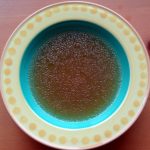
Healing Foods: Bone Broth (Paleo, AIP, GAPS, Wahls, Whole30)
- Total Time: 8-24 hours
- Yield: 4 quarts
Ingredients
- 3 lbs. bones (ideally: some meaty, some marrow, some gelatinous)
- 1 large onion (peeled and quartered)
- 1 large carrot (scrubbed and cut in half)
- 2 stalks celery (cut in half)
- 1 clove garlic (peeled)
- 2 Tbsp. apple cider vinegar (this helps draw the minerals out of the bones)
Instructions
- Optional: roast your bones for 30 minutes in a 350 degree oven, for extra flavor, before adding them to the soup pot.
- Place the bones, along with the rest of the ingredients, in a large soup pot. Cover with water and bring to a boil, then reduce to a very low simmer (just barely bubbling). Cook for at least 8 hours, and as long as 24 hours. The longer you cook it, the more nutritious your broth becomes. (The only exception is fish bones: they're so small, you only need to cook them for a few hours.)
- If you cook the broth for longer than 8 hours, check the water level occasionally. If you don't have a tight-sealing lid on your pot, you may need to add water once or twice a day.
- Optional: When your broth is almost ready, remove the cover, increase the heat back to a simmer, and cook it one final hour. This evaporates some of the water and concentrates the broth, which can give it more flavor and a more gelatinous appearance. It's not a necessary step; it's a personal choice.
- When it's time to strain the stock, use a slotted spoon to scoop out the larger vegetables and bones. Then, place a mesh strainer over a large heat-proof bowl and pour the broth through the strainer. You'll be left with a beautiful, translucent liquid. Pour it into glass jars, allow to cool for 1 hour, and then refrigerate.
- As the broth cools in the refrigerator, the fat will harden on the surface. This is good, as it keeps the broth fresh longer. As you use each jar, you can remove the fat and use it for cooking other things, or leave it in the broth. As long as there's a thick fat seal, the broth should keep well in the fridge for weeks. However, it's a thin fat seal or the seal is broken, use it within 5 days. You can also freeze broth for up to 6 months.
Notes
- You can use this broth as a base for soups, casseroles and stews, or you can simply add salt and your favorite herbs and drink a cup alongside your meal. Be prepared: this broth is highly nutritious, but it won't taste like the stuff from a can. There are no artificial flavor enhancers added, so it may seem bland by comparison, but trust me: store-bought broth subtracts from your health, while homemade bone broth adds to it.
- If you're cooking bone broth for a large family, perpetual broth is a creative solution. Instead of using your stove, put all the ingredients in a crockpot. Fill with water, but not all the way to the top. (Many crockpots can overflow over long cooking times.) Turn it up to high until it begins to boil, and then turn it down to low. Within a few hours, you can start drinking it (use a ladle to scoop some out). Replenish as needed with fresh water. You can keep the broth going for 5-7 days. At that point, drain the crockpot, throw out the bones, wash it clean, and start over.
- If you have an Instant Pot, you can make bone broth in just 2-1/2 hours. See my Instant Pot Bone Broth recipe for details.
- You can also buy broth, if you don't want to make it yourself.
- Prep Time: 10 minutes
- Cook Time: 8-24 hours
- Category: Healing Foods
- Method: Stovetop
You May Also Be Interested In


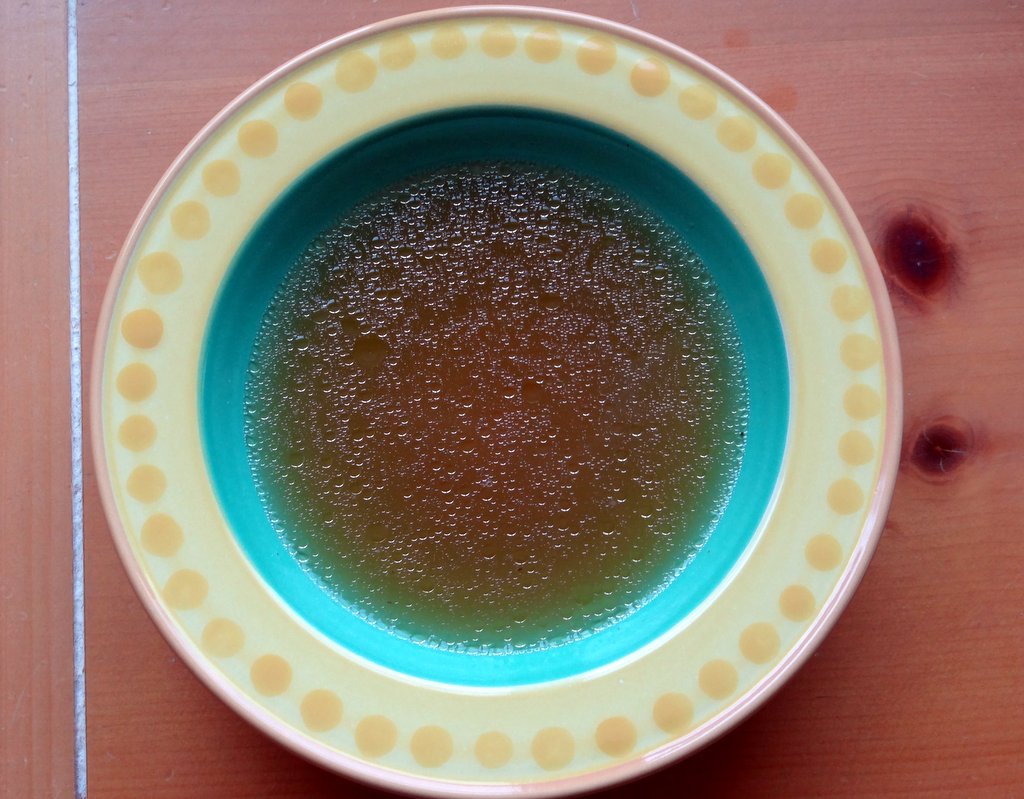
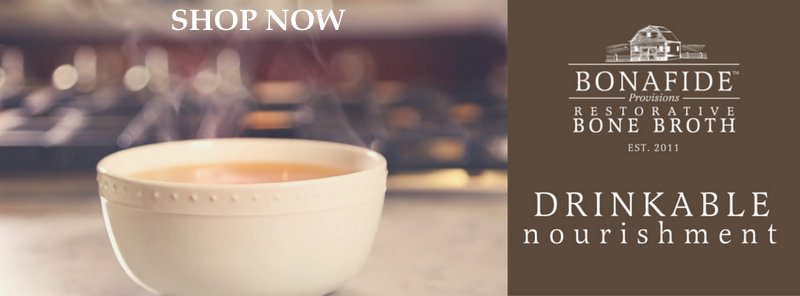

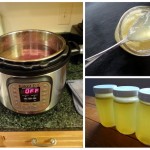

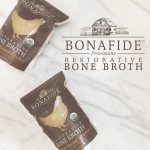



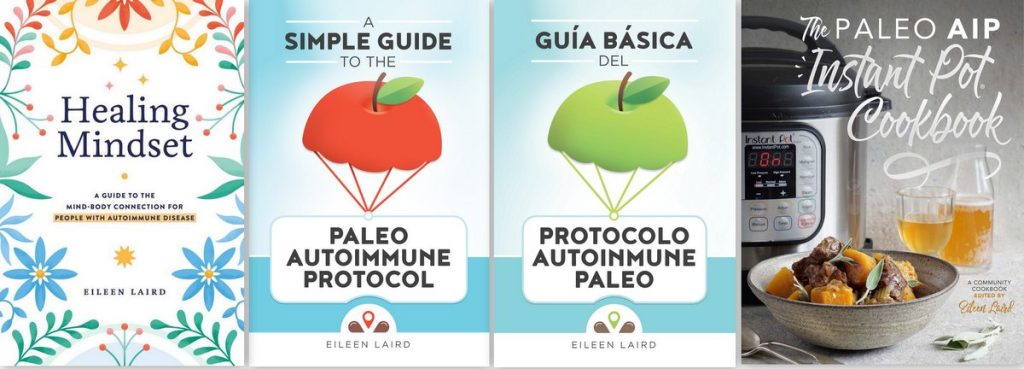
Thank you Eileen for an awesome post. I have been diagnosed with Hashimoto disease and currently following a strict AIP diet. However, I am reacting to a lot of AIP foods (cauliflower, kale,pears …) and i was wondering if you would recommend a bone broth fast , lets say a couple of times a week? I know that Hashimoto sufferers dont need more stress and fasting certainly is stressful , but i was wondering if bone broth fast could help heal my gut first since that is the root of my issues? I love bone broth and i make a batch every week and i was just curious if doing bone broth fast a couple of days a week could help me jump start in the process of healing my gut which would eventually help me decrease thyroid antibodies or would the bone broth fast make things worse. ? Thank you in advance for all of your help and continuous support.
Rory
Hi Rory. I’m actually not a fan of fasting. Too often, it can put people in an intense detox response that can be harmful to health. It can also stress the adrenals that are often already compromised in people with Hashis (as you already know). The gut is just one root cause of disease – it’s not the only one. It’s a common mistake to think removing more foods is the answer. In fact, it’s quite possible you aren’t reacting to other foods at all, but rather to stress, lack of sleep, hormone imbalances, or a gut infection. If you’re open to working with a functional medicine practitioner, I recommend Replenish PDX. They are Hashimoto’s experts. They also offer an online program that can give you a general overview of all the forces that impact Hashis. It’s called the Hashi Companion. If you’d like 1:1 help after that, their counseling services could help you troubleshoot. Wishing you wellness.
Thank you so much for taking time to answer my question so thoroughly. I appreciate your help.
Eeeekkk I am so confused! I have a suspected histamine intolerance which i may have been aggravating with our long cooked broths (24hours +)…of course, this is an ongoing investigation. i have just read that broths cooked for less time (3.5 hours!) are actually better for gut healing as they still contain certain enzymes that disappear with a long boil. Now the answer to my question is even more elusive…to cook long or slow? What do you think?
[Thank you so much for your wonderful resource which has helped me make important changes to my life]
Hi Kylie. I don’t think one is better than the other – both can be healing to the gut. But you are right – if you have histamine issues, you might want to switch to the shorter cook time until that improves. If you haven’t listened to my podcast on Histamine Intolerance, I recommend it. It’s full of helpful information regarding diagnosis and treating the root cause.
Can the bones be used for multiple batches? Just thinking that if one could make perpetual broth, would you not be able to use them more than once? Hmmmmm. Thank you so much for all of the information you provide – it’s been priceless as I begin my journey to healing!
Hi Amy. Yes, you can absolutely reuse bones – until they crumble actually. Just always add 1 or 2 new meaty bones to each batch for flavor and diversity of nutrients.
Thanks so much for the quick reply. 🙂 I can get grass-fed oxtails from a local 5-generation rancher (see “3 Sisters” on Whidbey Island) and I’m anxious to get busy with the canning. Love your site!
Hi, Eileen,
I’m new to this bone broth idea, but I really want to see if it will help some of my health issues. Thanks for posting so much great info. I do have a question, though. I have a HUGE stockpot (also an Instant Pot for smaller mounts) and I’d like to make the bone broth and can it. I see that you recommend freezing it, but would canning be all right? Thanks for any suggestions.
Canning would be fine, Kin. That’s a great skill to have!
Hi! My 10mo baby has an inflammed gut (doesn’t produce enough pancreatic enzymes as determined from a stool test) + multiple allergies (dairy egg etc). I started giving her chicken stock (whole chicken cooked 3 hours), and she produces red spots and watery eyes, runny noise (histamine reaction)? What do you suggest I do give her to help heal her gut if she’s reacting in such a way to the stock? Thank you
Hi Naseeb. I’m not really qualified to answer this question. I recommend listening to the recent podcast I did on Histamine Intolerance and then consult with the woman who was the expert guest on the show: Alison Vickery. You’re a great mother!
Thank you, Eileen. I try not to put too much pressure on myself. I did a Whole30 2 years ago & it was very eye opening. But I was still a vegetarian at the time & I had to make a lot of changes. I have come a long way! I was a vegetarian for 25 years & adopted eating meat like a champ. I am still on the fence about organ meat though. 🙂
Thanks again for the support!
How much broth would one chicken carcass make?
It depends on the size of the carcass Melissa. Some people use 2 carcasses for 1 batch of broth. Others use 1. You can reduce the liquid if you just want to make a 1/2 batch.
The chickens I get are fairly small, maybe 5 lbs? If I used one 5 lbs chicken would I get enough broth to last me a week maybe?
A full batch makes about 4 quarts of broth. A 1/2 batch makes 2. That should be enough to last you a week, because 1 cup a day is a medicinal amount. Enjoy!
Thank you so much! I am getting so overwhelmed with all this info. I work full time, have two kids & have Rheumatoid Arthritis & I am trying to get myself off of methotrexate & into remission. But sometimes I feel as though all of these things I should & shouldn’t be doing is stressing me out. So, it is really wonderful to know 1 chicken will make enough to last me a week! PHEW! 🙂
Melissa, my advice is to take a deep breath, don’t try to do everything perfectly all at once. Each step you take toward healing is beneficial. Do what you can do, and be gentle with the pressure you put on yourself.
Fish Broth…. I am making my first attempt at Fish broth. I ordered two fish carcasses from my local fish guy including the heads. Not sure what kind of fish they are but they are huge and barely fit in my crock pot!!! I put them in there fins and all.
I plan on cooking them at low for about 5 hours although I’ve read you can go longer. Was wondering what your experience or advice would be with making fish bone broth. I skip the step of bring it to a boil then reducing the heat since I go with the crock pot method.
btw, I don’t skim either and my broth is almost always cloudy but cloudy doesn’t bother me… It could be marrow from the bones I use breaking down into the broth. It’s delicious cloudy or clear and I don’t worry about the appearance of my broth anymore. Maybe one day I’ll be surprised with a clear batch! LOL!
Hi Toni. I’ve never made fish broth myself, but it’s incredibly nourishing, and I really should work it into my rotation. It would be a great base for any seafood soup. Here’s a recipe for fish bone broth from someone with experience: http://paleopumpkin.org/fish-bone-broth/
Thanks, Eileen. I checked our her site. He fish broth looks beautiful! I think I cooked mine too long (6hrs). It very cloudy but I’m going to use it anyway and chalk this batch up as a learning experience. No one will know once I convert it into a nice creamy chowder! :0)
Appreciate you pointing me in the right direction…
If I were to make this in the slow cooker instead, would the cooking instructions and ingredients be the same? 🙂
Yes. Just cook it on LOW, and check the water levels a few times throughout the day. Slow cookers often evaporate more liquid over long cooking times.
Beef/Lamb/ Chicken broth is always ready in my freezer. I buy everything natural/organic from my local butcher and make a whole pot for the family. I mix cow’s feet and Goat or sheep’s Head ( i mean the entire head; cleaned up and seasoned) and boil for hours then simmer; i scoop out remainin bone marrow and take the remaining meat out for soup. You can freeze some in small containers and add to your baby food. I make sure my baby drinks bone broth and eat marrow meat;extremely beneficial for growth but do not feed to much because it is pretty heavy for lil ones. i put broth on ice tray and then transfer them to ziplock bags always under my hand when cooking. I am making some tonight for this weekend, i now have a new recipe cant wait to try it with yogurt 🙂
You are a bone broth queen! Thanks for sharing, Neva.
Hi ! i was diagnosed with rheumatoid arthritis back in Nov 2014, i have had pain for years but finally diagnosed, i also have IBD,GERD, PCOS and Anxiety. i came across your website by searching AIP ! i will not be taking any meds for RA( dr not very happy about it), but i will start aip this monday and your website is such a blessing. will be shopping today, can’t wait to try the bone broth !
Welcome to the AIP community, Yolanda. Thanks for saying hello! Wishing you healing on every level.
I have been making bone broth for about 5 months now and have noticed a big difference. I suffer from several chronic muscle-skeletal injuries and severe osteo-arthritis at only 49. It seems to provide a coating to my nervous system that helps me better ‘deal’ with the pain. And I am hoping that the long-term benefits of joint tissue healing will pay off. What it does for my skin is amazing (acne, dryness, and even lines).
I haven’t found much literature establishing the best cooking duration above 24 hours. I keep hearing that the longer you boil the more nutrients are extracted. But I was wondering if there is a diminishing return after about 24 hours. I noticed that when I boil for longer than 24 – 26 hours, the broth is much cloudier. I wonder if it’s because the collagen and other bone properties are breaking down and making it cloudier perhaps? Any thoughts on the best duration for optimal nutrient extraction without overdoing it? I use a mixture of grass fed marrow and meaty bones (chicken and beef).
Honestly Gaby, there haven’t been scientific studies done on this. Follow your intuition. If a 24 hour is providing you with so many benefits, I say stick with it. 🙂
I am very impressed with your blog. It was forwarded to me from a friend who is very health concerned about herself and others she knows. So I have decided to try your bone marrow Soup first and I am also going to send your blog on to a friend of mine who has a mild case of AckneRosea.
I’m also wondering if you think the Bone marrow Soup might work as a remedy to help reverse Virtigo which I have been dealing with lately.
Thanks for the excellent blog information.
Paul Addison Wilhite
Hi Paul. While bone broth is a healing food, it’s not a miracle cure. It’s meant to be one component in a healing diet and lifestyle. Give it a try, though, and see what results you feel. Some people do notice a big difference, even with one small change.
I have google searched on these two questions that I have very little answers on. How much broth a day to really matter? (For economic reasons, I do not want to drink a quart a day). Healing stories? I have found very little what broth did for the person. All I can find is the benefits.
Hi Charity. Yes, you will be frustrated if you’re looking for specifics. There have never been clinical trials run on how much broth produces how much benefit. Each broth is different, and each person is different. Most of us consider it a healing food as part of an overall diet that improved our health. It’s not the one thing that worked; it’s part of a whole. For example, if I ate a SAD diet simply with broth added, I don’t think it would do me much good. But as part of a nutrient-dense, anti-inflammatory diet, I love it, and I miss it when I go a week without drinking any. I think starting with 1 cup a day is fine.
Thank you for your reply. I did find a good one. http://www.thehealthyhomeeconomist.com/periodontal-problems-bone-broth-key-to-your-recovery/
Hello! I preface this first question by saying that it’s probably a silly one… I’m nervous about leaving my stove on for 8-24hrs; is that safe?? How do you manage your day- do you have to just set the entire day aside to make and monitor your bone broth?? Also, how long will it last in the freezer? What type of container would you freeze it in- obvi plastic would be out or the question. Thanks!
Hi Jasmine. I’m very comfortable leaving my stove on low when I’m out of the house during the workday. As long as your pot seals well, very little water will evaporate. Bone broth is meant to cook on a very gentle simmer. However, if it makes you feel more comfortable, feel free to use a crockpot. Many people do. I would say the broth will last 6 months in the freezer, and here’s a link to a variety of freezer-safe glass containers.
Thanks Eileen! I did it and the broth tasts great! I plan to drink 10oz of bone broth each morning to attempt to heal leaky gut and help w/hashimotos. I’ve been reading how the broth can heal leaky gut but I can’t find a time span associated w/the claim. Obviously it would depend on how damaged the gut lining is but do you have an estimate on how long it could be before I could potentially heal my leaky gut (which is a major contributor to my hashi issues)?
Thanks!
Jasmine
Congratulations on your first bone broth! You won’t find healing times because everyone is individual, and there are many components of healing. Bone broth is just one of them. That said, take comfort knowing you have added a wonderful healing food to your diet. Nourishing our bodies is the first step!
Hi Eileen- thanks! I’ve been struggling w/cystic acne since I quit BCPs a year ago and after 2 weeks if daily bone broth, my fave is almost completely clear! I sometimes feel a little headache after consuming it- could I be detoxing from it? I also read some literature claiming that bone broth is very high in flouride and is therefore toxic; is there any truth to that? I am so encouraged about how great my skin is looking, I want to continue to drink a cup a day but I don’t want to be hurting myself. Thanks, Eileen!!
Jasmine
Hi Jasmine. If your face is clearing up, that is your body’s way of telling you that bone broth is good for you. Don’t worry about some of the fringe headlines out there. If fluoride was a big problem, bone broth wouldn’t be recommended by so many respectable sources like Chris Kresser, Terry Wahls and Sarah Ballantyne. As for the headache, some people do get a histamine response to broth (and any slow cooked foods or leftovers in general.) Since your headache is minor, I wouldn’t worry about it. But if it increases, you can reduce the histamine in broth by cooking it for a shorter period of time in a pressure cooker. Autoimmune-Paleo has a good recipe: http://autoimmune-paleo.com/pressure-cooker-bone-broth/
Hi Eileen! I started drinking chicken bone broth, everyday, for about the last two months. My cystic acne has cleared up a great deal. About 5 days ago, I started getting severely itchy legs and when I scratch my legs, I get a white rash. If I leave it alone, it goes away in 30mins. Lotion doesn’t help. I’m also doing AIP; I am on day 20. I’ve never had this reaction on my skin before and it’s not limited to my legs but for some reason, it affects my legs most. So you think this could be from the bone broth- the histamines? If so, why would it just be showing up now? I don’t want to stop the broth b/c my face is clear but yikes my legs are so itchy! Please help!
Jasmine
I’m sorry about the rash. That has to be so uncomfortable, and of course you want to know the cause. The truth is, there are many possibilities, and histamines are just one of them. It could be a reaction to new food or a new product, or a medication or even stress. It can also just be your body detoxifying – the skin is a major detox organ. Here are my recommendations: (1) Has any changed in your life recently that could be the cause? If yes, remove that new element from your life and see if the rash goes away. (2) Support your body’s detox abilities with some of the methods in this article: http://www.phoenixhelix.com/2013/12/29/link-love-detoxify/ (3) If those interventions don’t work, go off the broth for a week or so and see the rash goes away. If it does, one solution here is to cook your broth in an Instant Pot. It makes gelatinous broth in just 2 hours – so you get the nutrition with less histamine. (Histamine is released over long cooking times). (4) If none of those solutions work, I recommend a 1:1 consult with an AIP expert: either The Paleo Mom Consulting or Katy Haldiman.
Hi Eileen, thank you so much for your blog and recipes. I am looking at bone broth recipes this weekend, and I am wondering if you can offer some advice. I am currently doing a very strict elimination diet to identify food sensitivities that may be contributing to my reactive arthritis, but one sensitivity I have already uncovered for myself is raw onions and garlic, so I am eliminating them for this process to make sure I am not also sensitive to the cooked version. Is there anything you would recommend I replace them with in this recipe?
How about fresh ginger? That adds a nice flavor and also has some healing properties as well (anti-inflammatory and digestive aid, to name two).
What is the difference between using Great Lakes Kosher gelation (which I understand is AIP-friendly) versus homemade Bone broth?
Hi Cheryl. Gelatin is healthy, but bone broth is even healthier. Whereas gelatin is an isolated ingredient, bone broth is a whole food which contains gelatin and many other nutrients as well. I enjoy both. I make bone broth every week, and juice jello when I want a treat.
Is there any canned or boxed chicken stock I can use on AIP in my recipes. I never have enough bone broth saved up for recipes. And, I am generally too exhausted to make it.
US Wellness sells bone broth – just enter “broth” in the search box to quickly find what’s available: http://bit.ly/17lGMGy . I’ve looked at broth in the grocery store, and even the organic brands usually have sugar added or ingredients like “natural flavors” or the generic “spices” which means you don’t know what’s in there. Also, grocery store brands aren’t going to have the nutrition that bone broth is known for, because they’re mass-produced rather than slow-cooked.
I am so glad I found this blog through US Wellness meats! I am new to AIP using Mickey Trescott’s “Autoimmune Protocol” Book. Not necessarily a plug just informational since I came across her book after reading Diane Sanfillippo’s book “Practical Paleo” which led me to her blog and ultimately Mickey’s book. I carry it around like it’s the bible!!! I’m three weeks in and still learning. It’s a lot of cooking and a lot of dirty dishes but had been worth it! My Crohn’s disease hasn’t been this silent and pain free in a long long long time. Wish I could say the same for Sjogren’s and Rheumatoid…but it’s a process, right? Plus I’m losing a lot of weight after years of Steroid usage.. can’t believe that I’ll likely be under 200lbs within the next 30 days. WOW! That’s incredible by itself but not why I started this journey, just a nice side benefit!
I needs some advice on bone broth. I have now made two batches. The first batch was a total failure…apparently not enough bones. The second batch turned out really cloudly but very gelatinous…apparently I didn’t quite understand the meaning of simmer and boiled it too much! I tried to clarify it using egg whites been ended up loosing about 4 quarts of bone broth because I couldn’t get all the egg whites strained from the broth but the ~1 quart I had left was delicious.
So, here’s where I need help. Is it bad to eat cloudy broth? Does it effect the taste? I was so afraid to eat it because it was cloudy. I really want to nail how to make a nice clear gelatinous broth because I know it’s critical for the healing process.
Would appreciate advice from anyone that can help! Thank YOU so much!
Toni
Hi Toni. Mickey’s awesome, so I don’t mind you plugging her book. 🙂 I love hearing about the progress you’re already seeing in 3 short weeks. Food is so powerful. You’re absolutely right that you should see improvements in Sjogren’s and RA over time. As for the broth, the cloudiness won’t hurt you at all. Egg whites could cause a lot more damage. Don’t worry about “perfect” bone broth. It’s not about how it looks; it’s about the nutrients it contains, and the appearance will always change from batch to batch. If you follow this recipe, however it looks – cloudy or not, gelatinous or not – it’s going to have nutrients that are beneficial to healing.
Awesome! Thank YOU for helping me. I figured I wasted a bunch of awesome gelatinous broth! I wish I had found this site before trying to clarify and just used it as is. There are some many yummy recipes that call for it and right now I have none but I’m picking up about 4 lbs of bones from the butch this Wednesday! Thank again! Love your blog!
I just bought some bone broth from US Wellness meats because there is no healthy meat selection where I live in FL. It’s my last step in hopes to cure my health naturally instead of a doctor. I’m excited to receive the health benefits and grateful I found a place to buy it already made!
That sounds great, Natalie! They sell quality products.
I have been using bone broth for autism. It is a slow process but there has been some improvement. Also there was a persistent rash on his stomach that the doctors did not seem to know what it was. After using the broth it all cleared up. Personally broth made from ‘feet’ seem to give more gelatin
Thanks for the tip, Eileen!
I have had moderate/severe Psoriasis for decades. I had alternative allergy treatments a few years ago which helped a lot but did not clear my skin fully. then I added ‘Earthing’ which cleared my skin further but not completely. Then I added Kefir and Sauerkraut, more improvement but not there yet. Now I have begun making bone broth and my skin is slowly clearing even more. All the other things I did have helped but they all worked up to a certain level and no further. Bone broth is still gradually improving my skin after 3 months of consuming it daily. My skin has never been clearer and I am now cautiously looking at being clear.
Thanks for sharing, Paul! Healing is often like this – finding one piece of the puzzle at a time.
Hello! Can you mix bones (chicken and beef, for example) or should you stick to one kind at a time? Thank you so much for the help!
You can definitely mix them up. One way to make bone broth on a budget is to save and freeze leftover bones from meals, and when you have 3 pounds, make a batch of broth. I think the mixed bones actually taste better – more variety of flavors.
Is it ok to use bones that did not come from free range, grass fed animals?
Yes, absolutely. Grass fed organic is the ideal, but it’s not required. Conventional bones still have lots of nutrition.
I have frozen oxtail. Should I let it defrost first or just throw it in the crockpot frozen? Do you roast them first. I know some people do and some don’t. Do you have a preference. Thanks for making other people’s journeys easier by sharing your knowledge and experience.
Oooh, oxtail is lovely. I recommend letting it defrost first. Roasting is a personal preference. Try one batch each way, to see what you prefer. Personally, I like the flavor better unroasted, but you might have the opposite taste.
Hi! I’ve been blessed with Lupus, Severe Psoriasis, Rhumatoid Arthiritis, IBD, Pernicious Anemia, Celiac, AIED and in the process of diagnosis for Type 1 Diabetes. When meds and creams stopped working, I actually researched these diseases and how I could help myself. I switched to Paleo and noticed a big difference then switched to AIP. Unfortunately, just in the last few days I learned that I was doing it “wrong” and the AIP recipes I was following was in fact, just Paleo minus nuts and eggs. I had no clue about Nightshades and I eat tomatoes and peppers like they are going out of style!!
Now, I only came across the information when I ‘cheated’ and started researching new recipes as I thought maybe I was having severe cravings as I was deficient in some nutrients. Then I found you. What a blessing!
I fear that I am about to make you laugh but I could really use your help, please!! How do I buy bones!?? I’d like to make Bone broth for my daughter, (7y, Celiac, IBD, Type 1 and starting to get a skin rash) and myself. If I go into a grocery market, can I just say “Hi, I’d like Bone Marrow bones or oxtail”… and they will know what I want OR is there a specific bone that is packed full of bone marrow? I know ABSOLUTELY NOTHING about bones ! Do you have a specific name of the bones that I should or could use? I am not even sure how to get in touch with a farm.. or where a farm is!
Thank you for your website. I am in tears writing to you right now. I cannot buy a cookbook for a few months, there’s just no money so I am relying heavily on your roundups! (I have 4 children – 3 of the four are Gluten Free/Dairy Free/Egg Free and our grocery bill more than our house!!!) So thank you for your time to document SO much information and putting the energy into the round ups.. I am sure I am not the only one who appreciates it!
I wish I could reach out and hug you. What an amazing woman you are. The good news is that it’s easy to start making bone broth. The very easiest way is to roast a chicken, and then after you pick off the meat, just use the carcass to make the broth. It’s absolutely delicious and nutritious. If you want to expand to other bones, just go to the meat counter of your grocery store (or a butcher shop if you have one in your town) and ask them about soup bones and pet bones. Soup bones usually have some meat on them. Pet bones are usually the marrow bones. They should also know what oxtail is, because that’s a common ingredient for stews. You can also make a great broth from ham shanks; they’re mostly bone with enough meat on them to give it a great flavor. And lastly, if you ever cook meat with bones (like pork chops or drumsticks), just keep the leftover bones in a container in your freezer, until you have enough for a batch of broth. It’s a great way to get more bang for your meal buck.
yes you can buy at store . but also was told by dr. kelly ann bone both book you should try to use cow bones that ate grass only and at health food stores you can buy there. the only problem i have is the store is alwayes out they said after dr. kelly ann went on tv telling people about her book bone broth they have a hard time keeping them in stock. as far as laughing at you for not knowing. dont worry . people dont know everything . we all had to learn from someone. well good luck. i wont to try it to im so over weight and have heart opertions and all the other diease you get from eating the wrong food. well good luck to both of us. well have a great day and god bless and alwayes remember john 3 16 in the bible and that god loves you all. have a great day.
Thanks for the great info. I’ve just started my first bone broth with grass fed oxtail. It’s a cold night in Appalachia, so I have it simmering on the wood stove. I love the crockpot idea too.
That sounds lovely, in every way.
I make bone broth in my crock pot. Usually let it cook for 3-5 days. Strain and then freeze. It has really helped my husbands sore knees, and I like not buying broth for sauces for cooking. This is one of the best things I have learned since going Paleo last fall.
I have only ever made chicken stock and turkey stock, but not used any other bones. This sounds delicious though! Thank you for sharing at what i am eating!
I’ve been experimenting with lots of different broths this year. I love chicken and turkey stock, too. My next broth to try is going to be with pork bones. I’m curious what that will taste like. For the beef bone broth, oxtail is my favorite. Try it, if you get a chance.
Ok I totally agree–I’d say 90% of my broths have gone un-skimmed and still delicious and full of all the good stuff you mentioned. To be honest, I’m not even sure what the make up of the foam is, but only heard it referred to as “impurities” so figured it’d be best to skim if possible. I’ve found that minimal water is what seems key to the gelatinization 🙂
That broth looks delicious (I have a similar post on the health effects of this wonderful stuff here: http://www.nourishingpassions.com/homemade-broth/), I love those pictures of meaty bones! I really enjoy looking through your blog & excited by your progress. I have multiple autoimmune conditions and have been on GAPS since Aug 2012, and still hoping more some better outcomes! One thing I learned late in the game is that it’s a good idea to watch for foam (scum) to rise to the top as it starts boiling, then skim it off (not sure exactly what it is other than “impurities”) otherwise it will just sink back into the stock & end up drinking it. Great post & will continue to check back here 🙂
Confession: I don’t skim! Lazy cook alert 🙂 It’s true that some people think this step is important (like the Nourishing Traditions author Sally Fallon), to prevent the broth from getting cloudy and tasting funny, but I wonder if that’s only true for short-simmered broths? I know my stock is very clear after 24 hours, and I strain it before bottling. I also take comfort in knowing that neither Terry Wahls (author of Wahls Diet) nor Natasha Campbell-McBride (author of Gaps Diet) include that step in their recipes. With all the cooking we real foodies do, I cheat where I can! I’m totally envious of the gelatin thickness of your broth though; that looks amazing!